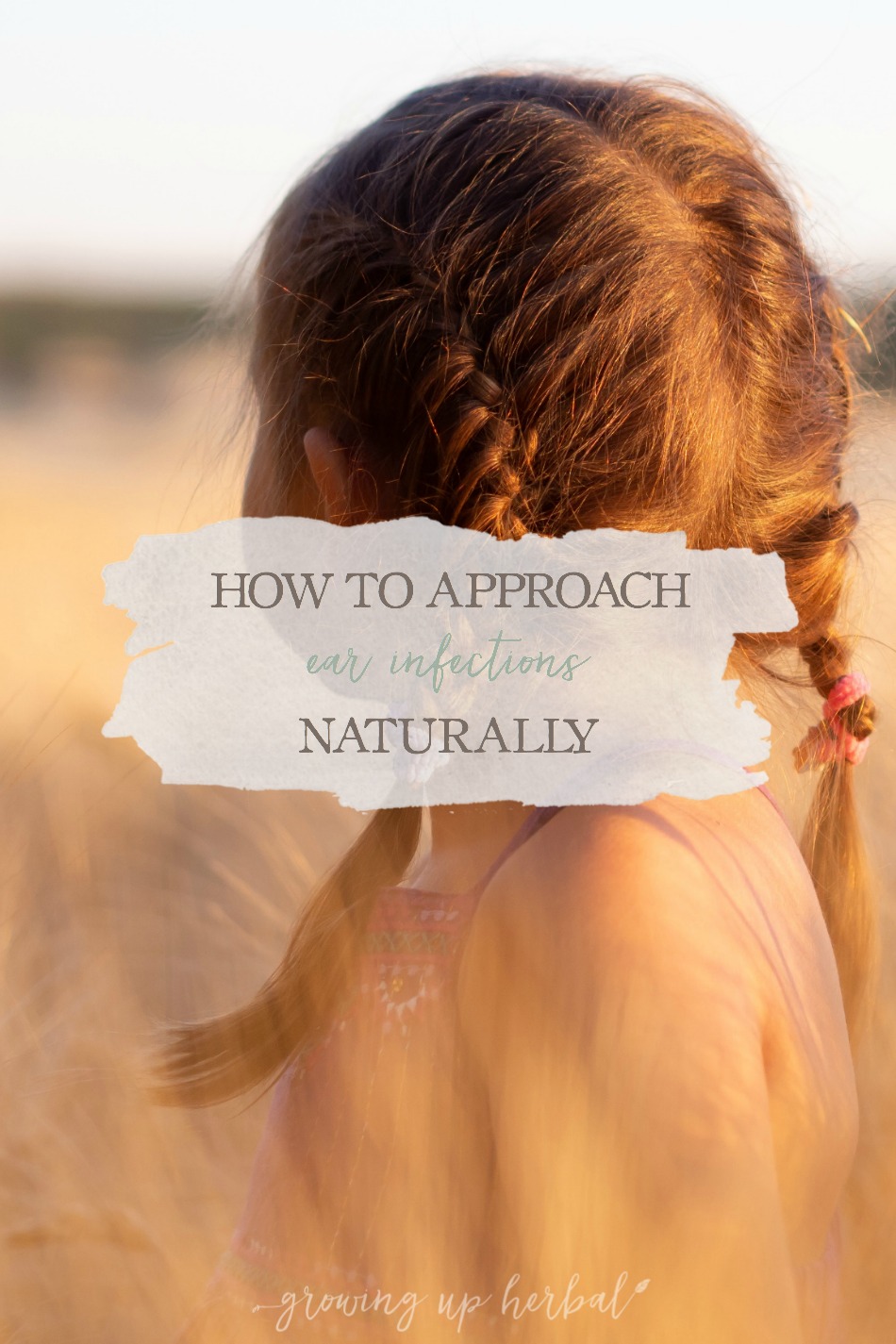
Because ear infections are a common occurrence during childhood, I consider myself very blessed that not one of my four kids has ever been diagnosed with one. Any time they’ve complained of an earache, I immediately approached the situation as if it were an actual ear infection — only from a natural perspective.
In this post, I want to talk a bit about acute ear infections, how you can approach ear infections naturally at home, and when it’s time to go see a doctor.
Ear Infections 101
Ear infections can be caused by bacteria or a virus (Normandin & Leonard, n.d.). They can occur in the outer (swimmer’s ear), middle (otitis media), or inner portion of the ear (Roland, n.d.) with middle ear infections being the most common. Ear infections are common in young children due to the small size of their eustachian tubes. Because of their small size, they can easily become blocked by ear wax, mucous, inflammation from surrounding tissues, smoke, and changes in air pressure. Children are most likely to get ear infections, but adults can get them too.
Symptoms
Most ear infections start out small and bothersome — sometimes you don’t even notice them until they’re really infected. You may feel a dull ache or a general feeling of unease. You may have a slight temperature (under 101 degrees Fareignheit) or experience trouble sleeping. Children often cry for no apparent reason and pull at the ear that’s bothering them (Normandin & Leonard, n.d.).
Looking Into The Ear
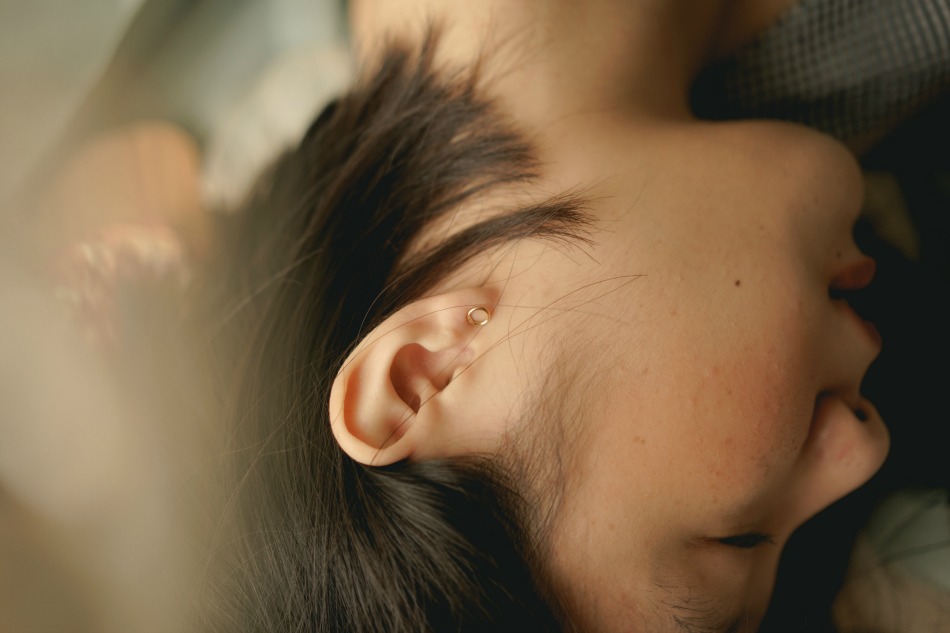
The first thing to do is to look into the ears for signs of infection. You can do this at home with an otoscope. It’s kind of hard to do this to yourself so you may need a friend’s help. If you’re looking into your child’s ear, it should be much easier. You’ll also need to know what you’re looking at. Some otoscopes (like the one linked to above) come with visual examples of health and infected ears. You can also find examples of what a healthy and infected ears looks like online. One of the most important things you’ll want to look for is how red and swollen the eardrum and surrounding tissue looks. The redder and more swollen, the worse the infection is. Another important thing to note is the presence of pus or a ruptured (tear or small hole in the) eardrum.
If you find yourself in a situation where you may be dealing with an infection, you have two options. First, you can opt to approach ear infections naturally at home. This can be a safe and effective option for mild ear infections with no signs of pus or ruptured eardrums. Another option is to go to your doctor to get an official medical diagnosis and their opinion for further treatment.
Common Medical Treatment
Most times, a doctor is willing to work with you if you’d want to approach ear infections naturally. In fact, back in 2013, the American Academy of Pediatrics changed their guidelines on how doctors diagnose and manage ear infections in children. Basically, it depends on the age of the child, the severity of the infection, and their health history (National Institute on Deafness and other Communication Disorders, n.d.). If the infection is mild and there’s no history of chronic ear infections, many times doctors will send you home. Most times, they’ll recommend over-the-counter pain relievers and a decongestant if you’re experiencing a lot of stuck mucous, but for the most part, they know your body will get over it on its own (Centers for Disease Control and Prevention, n.d.). If your symptoms don’t improve, or if they worsen in a 48-72 hour time period, they’ll have you come back and most likely prescribe antibiotics. You can see the most recent version of the AAP guidelines here.
Whether you decide to approach ear infections naturally on your own or under your doctor’s guidance, let’s look at some natural approaches you can use.
How To Approach Ear Infections Naturally
In order to approach ear infections naturally, there are three primary areas of focus.
- Infection
- Inflammation
- Pain
Plants with constituents that are beneficial in each of these areas can be used to support the body in overcoming what it’s facing and getting back into a state of balanced health, whether they’re herbs or essential oils. Other natural products that have been traditionally used in these situations may be of help as well.
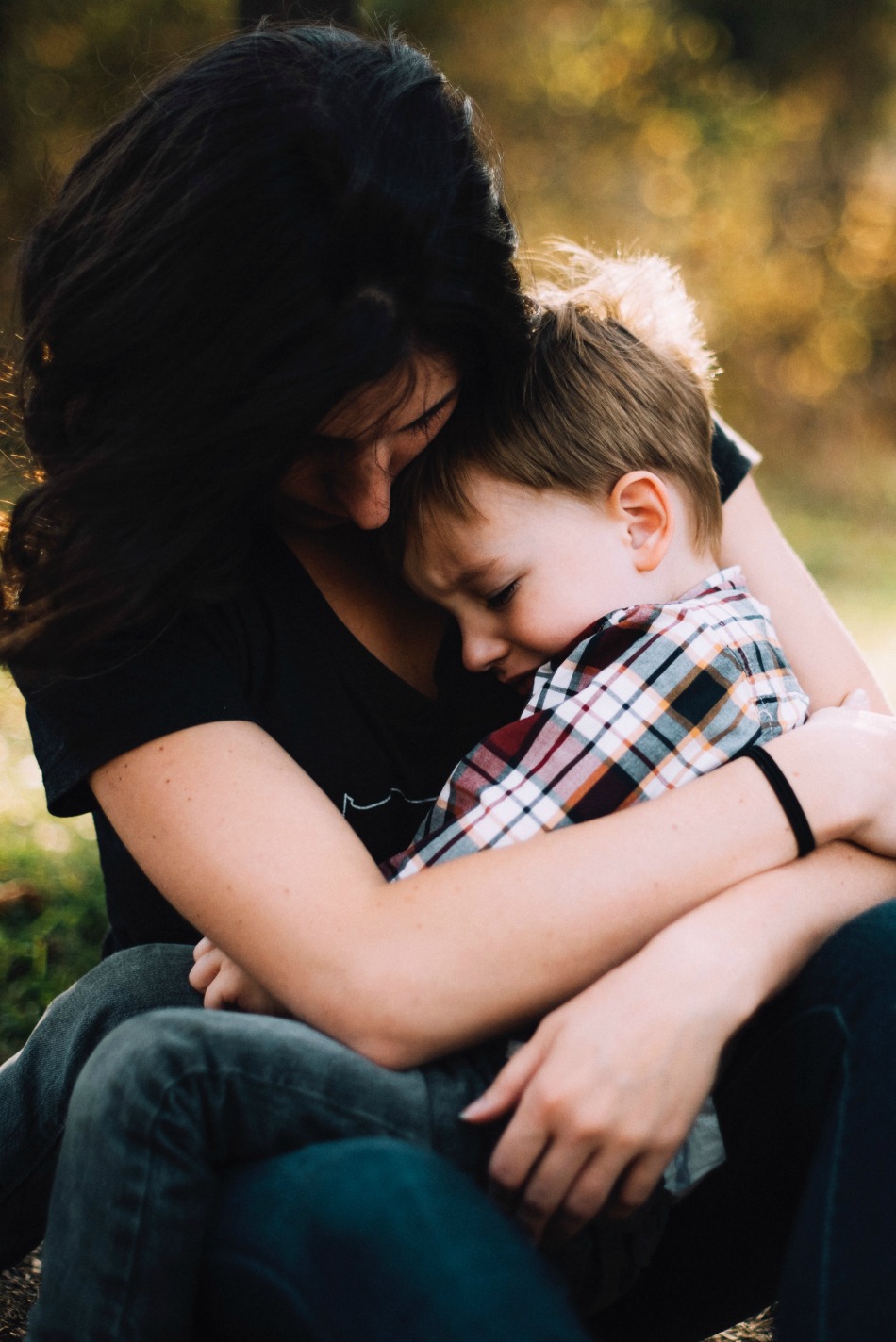
Infection
Like I mentioned earlier, bacteria and viruses are a common cause of ear infections. If we want to approach ear infections naturally, we need to choose natural options, such as herbs and essential oils, to assist our body in overcoming an infection. Plants that are known to stimulate the immune system, increase circulation, and have direct antimicrobial actions will be our best bet when it comes to approaching an infection naturally.
Immune stimulants work in a variety of ways, but generally speaking, they help stimulate the body’s immune response. Immune stimulating plants such as echinacea (Echinacea spp.), elder (Sambucus nigra or S. canadensis), and usnea (Usnea spp.) are commonly taken at the beginning of an illness, and when taken consistently and in large enough doses, can help decrease the duration and severity of the illness.
Circulatory stimulants stimulate the circulatory system in various ways. This stimulation may result in an increased heart rate, stronger contractions, or blood that flows to tissues more freely. Circulatory stimulants typically consist of warming herbs such as cayenne (Capsicum annuum) and ginger (Zingiber officinale), but cooling herbs like baptista (Baptisia tinctoria) can be stimulating as well. This particular action is beneficial as it benefits the transportation of plant constituents to the tissues that need them most.
Lastly, plants that have a direct action against pathogens can be used. There are many studies that show certain plants (garlic (Allium sativum) and goldenseal (Hydrastis canadensis) being a couple of them) to have a direct antimicrobial effect upon certain bacteria or viruses. These herbs can be used internally or directly on the infected tissue to help the body overcome the infection more quickly. Honey is another natural product that can be used to help with bacterial infections when needed.
Inflammation
Inflammation is a normal immune response to illness or injury. It’s similar to how the police rope off areas where they don’t want people coming in and interfering. The immune system triggers increased fluids and immune cells at the site of illness or injury. This response is in an effort to contain pathogens from spreading, to protect the area from further injury, and to focus on clean up in the localized area. While this sounds like a good thing, it’s often painful. Increased swelling and inflammation put pressure on nearby nerves causing pain. This pain not only notifies you that something is wrong, but it also tells you to leave that area alone while the body deals with the situation.
While inflammation is a good thing, it still hurts, and there are times when cooling lymphatic and inflammation-modulating plants like calendula (Calendula officinalis), plantain (Plantago spp.), mullein (Verbascum thapsus), and violet (Viola spp.), as well as other natural products that help ease inflammation, are needed.
Pain
While the pain that is felt from an ear infection is mostly due to the inflammation present, when approaching an ear infection naturally, natural products that can assist with pain may be needed. Anti-inflammatory herbs as well as nervine, relaxant, and sedative herbs like chamomile (Matricaria recutita or Anthemis nobilis), passionflower (Passiflora incarnata), and valerian (Valeriana officinalis) can be very helpful in these situations as can anodyne herbs like wild lettuce (Lactuca spp.) and wintergreen (Gaultheria procumbens).
Recipes To Help You Approach Ear Infections Naturally
Now that you know what an ear infection is, how doctors treat them, and areas to focus on when you approach ear infections naturally, let’s look at some recipes that can help you if you ever find yourself in this situation.
Herbal Rice Pack
One of the most simple yet soothing things you can do when you or your child has an earache is to apply heat to the outer portion of the year. Herbal rice packs are my favorite way to do just that! Not only are they fairly cheap to purchase, but a DIY aromatherapy rice bag is easy to make too.
To use an herbal rice pack to approach ear infections naturally, simply heat the herbal rice pack in a microwave or in the oven (at a low temperature) until it’s warm to the touch. Immediately remove it, and place it over the affected for 5-10 minutes, 2-3 times a day as needed. The heat is soothing and promotes healthy circulation to the area (Romm, 2000). Heat therapy is best used in conjunction with the two recipes that follow.
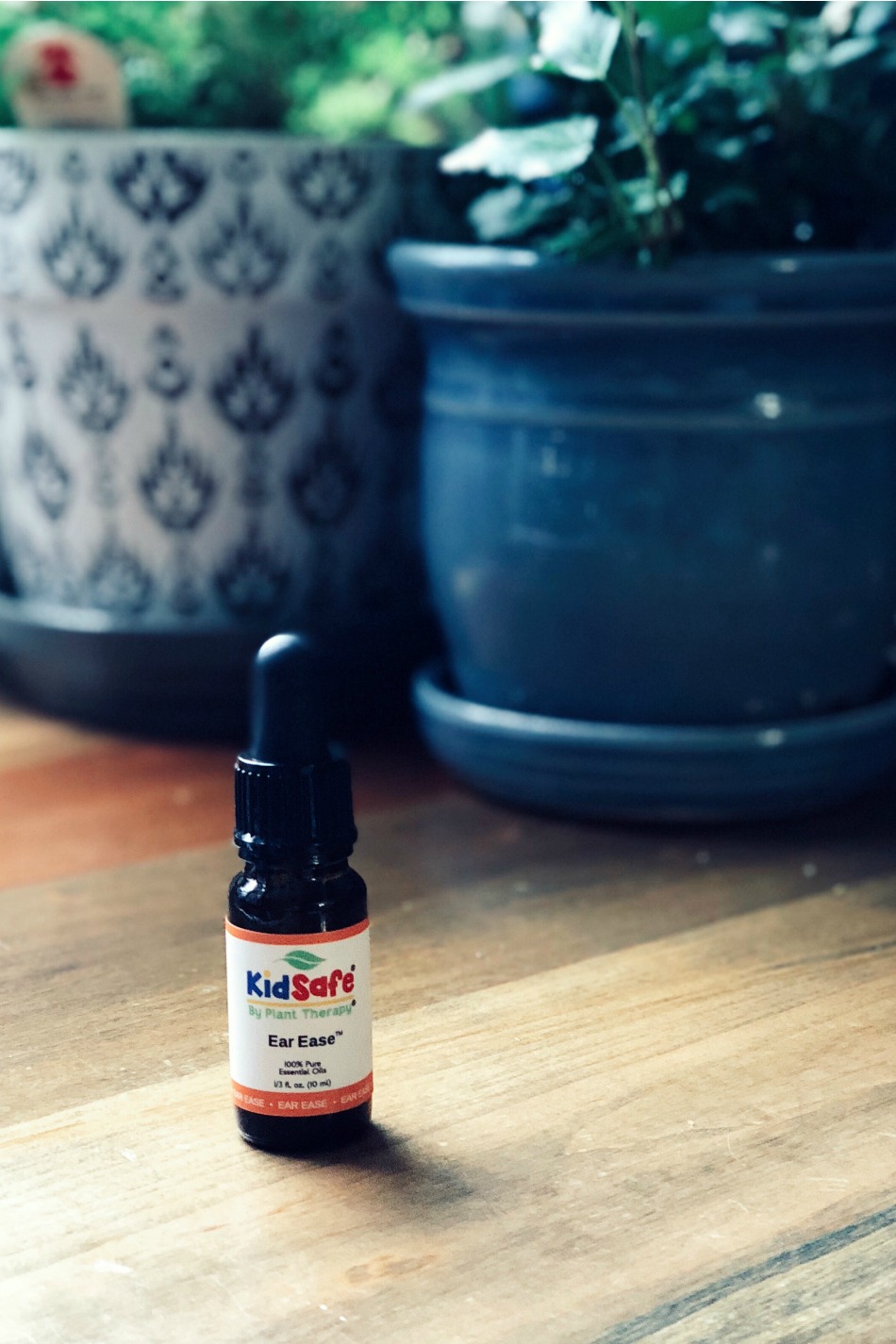
Essential Oil Ear Drops
Plant Therapy offers a KidSafe Synergy Blend called Ear Ease that is a great resource to have on hand for earaches. It is a blend of essential oils known to aid the body during an infection mixed with a carrier oil. It can be used directly in the ears when an ear infection is suspected as long as there are no signs of a ruptured eardrum. You can also use it (or this antimicrobial oil) to rub around the outside of the ear as well.
Learn more about Ear Ease here.
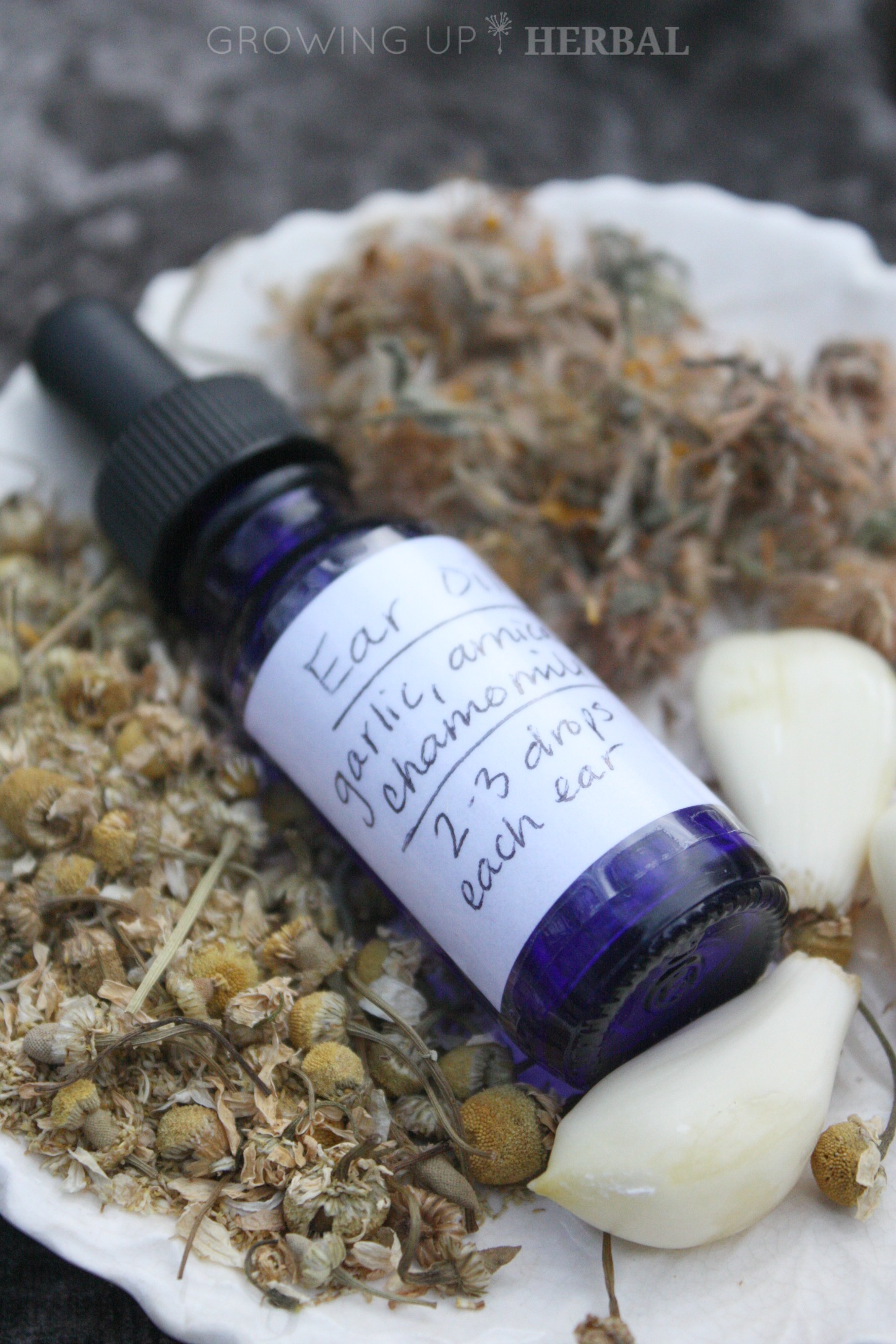
Herbal Ear Drops
I also like to blend up my own herbal ear drops using traditional herbs for earaches. The recipe can be found in my Herbal Remedy Recipes ebook. I apply this oil inside of the ears several times a day when earaches are present.
Get Herbal Remedy Recipes and my “Ear Owie” Earache Oil recipe for free here.
If you’re a member of my Herb Folk community, you can find an alternate recipe for an herbal earache oil there as well.
Hydrogen Peroxide Drops
Hydrogen peroxide has been used for years to assist the body in overcoming infections, specifically external wounds that are infected. To use peroxide to approach ear infections naturally, simply place a few drops into the affected ear (do not use if you suspect a ruptured eardrum!), gently pull the earlobe up, down, and to the side to assist the peroxide in getting all the way in the ear canal, and wait 5-10 minutes. It will bubble and fizz if an infection is present. When time is up, tilt the head so the peroxide can run out of the ear canal. Gently rinse the ear with clean, distilled water, and pat the outer ear dry. Repeat 2-3 times a day.
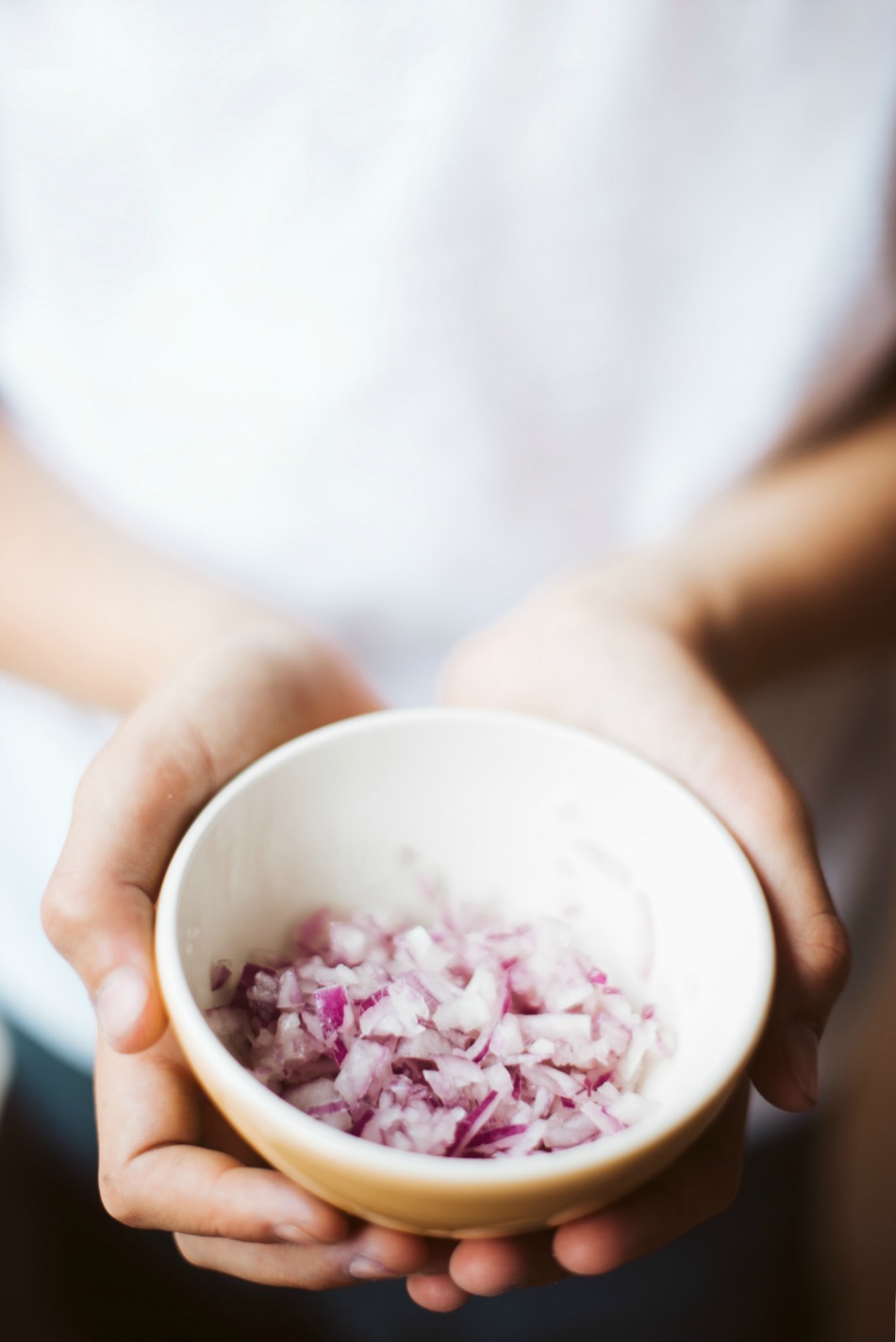
Onion Poultice
Onion poultices are an old-time folk remedy for all sorts of things from infection, congestion, warming tissues, and more. Herbalist Michael Tierra lists onion as a stimulant and says that it increases circulation, breaks up obstructions, and warms the body (Tierra, 1998). Onion poultices are often used on the chest to help break up congestion and ease coughs, but they can also be used on the low back over the kidney area or over the abdomen or bladder area when bladder/kidney infections are suspected. They’re used on the throat for sore throats, and they’re used over the ears for earaches.
To make and use an onion poultice for an ear infection, this post from my friend Gwen over at Gwen’s Nest is the easiest way to do it!
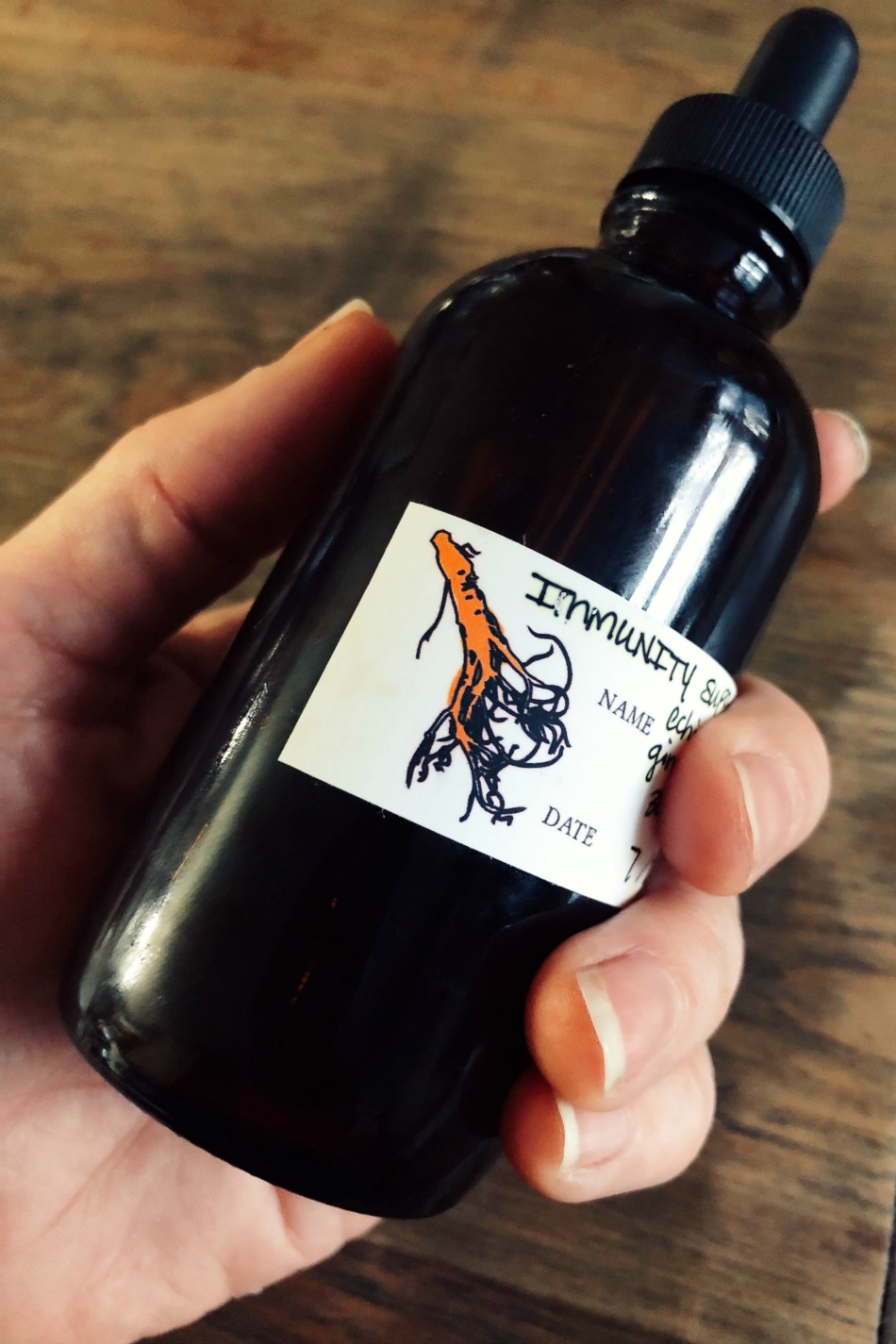
Tincture for Infections
Adapted from Herbal Recipes for Vibrant Health by Rosemary Gladstar (Gladstar, 2008)
This folk tincture is designed to be used internally to stimulate the immune system so the body will fight an infection on its own. An adult dosage would be 30-60 drops 3-4 times a day. When using this for a child, adjust the dosage according to their weight.
Ingredients:
- 1 tablespoon dried echinacea root
- 1 tablespoon fresh or dried usnea
- 1 tablespoon fresh garlic
- 1 teaspoon freshly grated ginger root
- brandy or vodka
Directions:
- Combine all herbs in a glass jar. Pour enough brandy or vodka (40-50% alcohol) to just cover the herbs. Cap and place in a dark, warm space for 6 weeks.
- Strain herbs from the liquid. Compost the herbs, and put the liquid in a clean glass bottle with a dropper top. Label and store.
- Combine all herbs in a glass jar. Pour enough brandy or vodka (40-50% alcohol) to just cover the herbs. Cap and place in a dark, warm space for 6 weeks.
- Strain herbs from the liquid. Compost the herbs, and put the liquid in a clean glass bottle with a dropper top. Label and store.
Garlic Honey
Garlic honey is a safe and tasty herbal recipe for kids that I use anytime I suspect an infection in the body. Garlic has amazing antimicrobial properties and holds its own against many common antibiotics. If you can’t use the tincture recipe above or if you want an alcohol-free option, this is it!
Get my garlic honey recipe here!
When It’s Time To See A Doctor
Like I mentioned earlier, you can visit the doctor to get their opinion and an official medical diagnosis as soon as your ear starts hurting. Many times, they’re willing to send you home to manage the infection on your own if it’s not too bad. Whether you decide to approach an ear infection naturally on your own or under the guidance of your doctor, don’t forget to return to the doctor if your symptoms don’t improve or get worse in a 48-72 hour time period.
Another reason to see your doctor is if your eardrum ruptures or perforates from the infection. This means that the pressure from the infection behind the eardrum was so great that it created a tear or hole in the eardrum. While these tears normally heal themselves, it’s best to have it looked at by a doctor. Sometimes they don’t heal. This can lead to more infections and other health issues later on.
The last reason to see a doctor is if you or your child has recurring acute ear infections or if the infections become chronic. Chronic ear infections can lead to long-term damage such as scarring and hearing loss. While there are things you can do to prevent recurring ear infections, if there’s something beyond your control, a doctor may be able to help you figure out what’s going on.
REFERENCES:
- Centers for Disease Control and Prevention. (n.d.). Ear infection. Retrieved from https://www.cdc.gov/antibiotic-use/community/for-patients/common-illnesses/ear-infection.html
- Gladstar, R. (2008). Rosemary Gladstar’s herbal recipes for vibrant healing. North Adams, MA: Storey Publishing
- National Institute on Deafness and other Communication Disorders. (n.d.). Ear infections in children. Retrieved from https://www.nidcd.nih.gov/health/ear-infections-children#7
- Normandin, B., & Leonard, M. (n.d.). Ear infections. Retrieved from https://www.healthline.com/health/ear-infections
- Roland, J. (n.d.). Everything you should know about ear infections in adults. Retrieved from https://www.healthline.com/health/ear-infection-adults
- Romm, A. (2000). Naturally healthy babies and children. Pownal, VT: Storey Books.

This post was underwritten by Plant Therapy. All opinions are mine. Plant Therapy offers 100%, pure, undiluted essential oils sourced from some of the top essential oil suppliers in the world. They have single oils and synergy blends as well as a line of synergy blends specific to children. Not only do they offer high-quality essential oils, but they also offer carrier oils, hydrosols, and other essential oil accessories to help you keep yourself and your home naturally healthy.
Love the idea of using a poultice! That’s one I haven’t tried, but will certainly keep in mind!
What a helpful list of remedies. Thank you so much! I’m grateful I haven’t really had to deal with ear infections in my kids yet, I think the one time I did I used olive oil infused with garlic. It worked wonderfully.
Glad to hear you were on top of it, and it didn’t turn into something bigger!